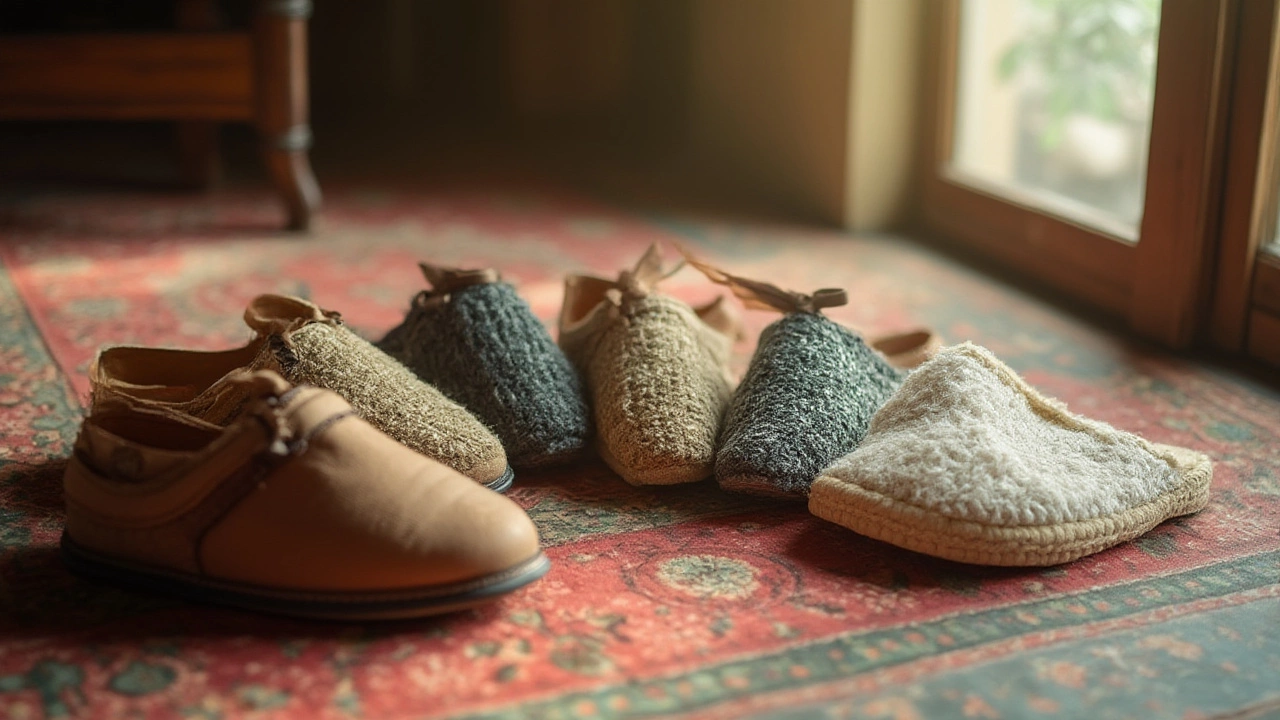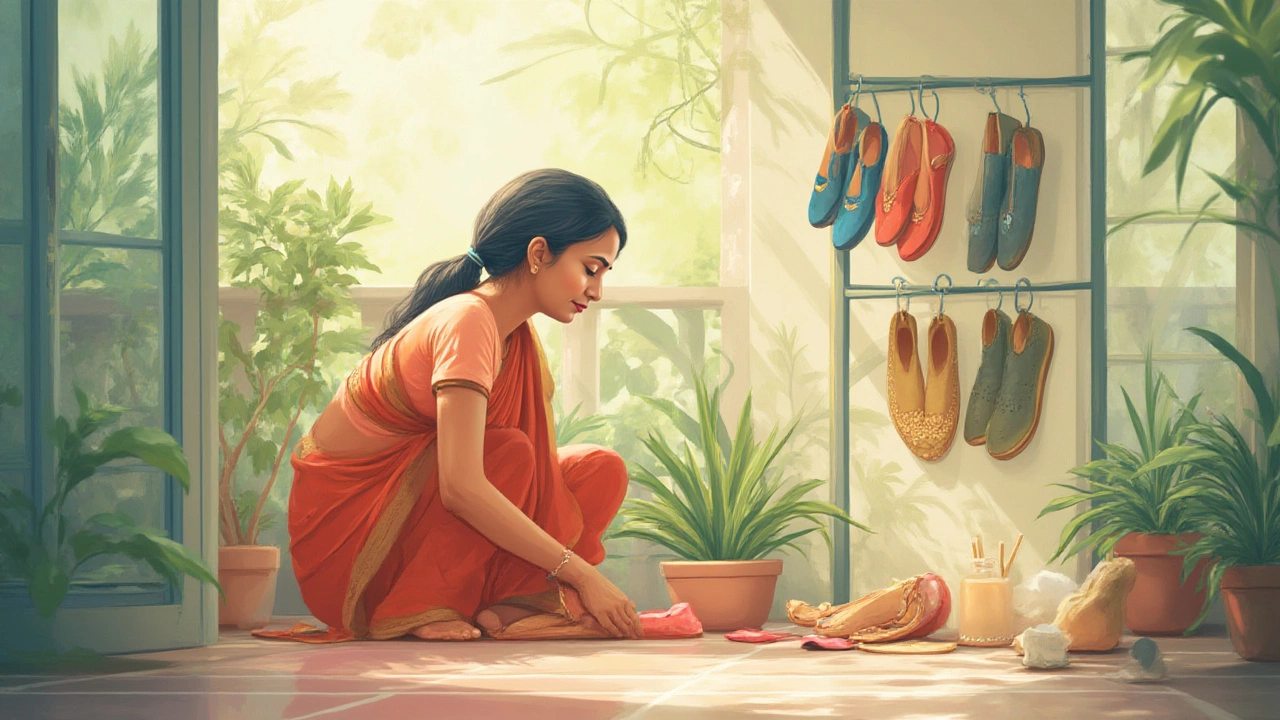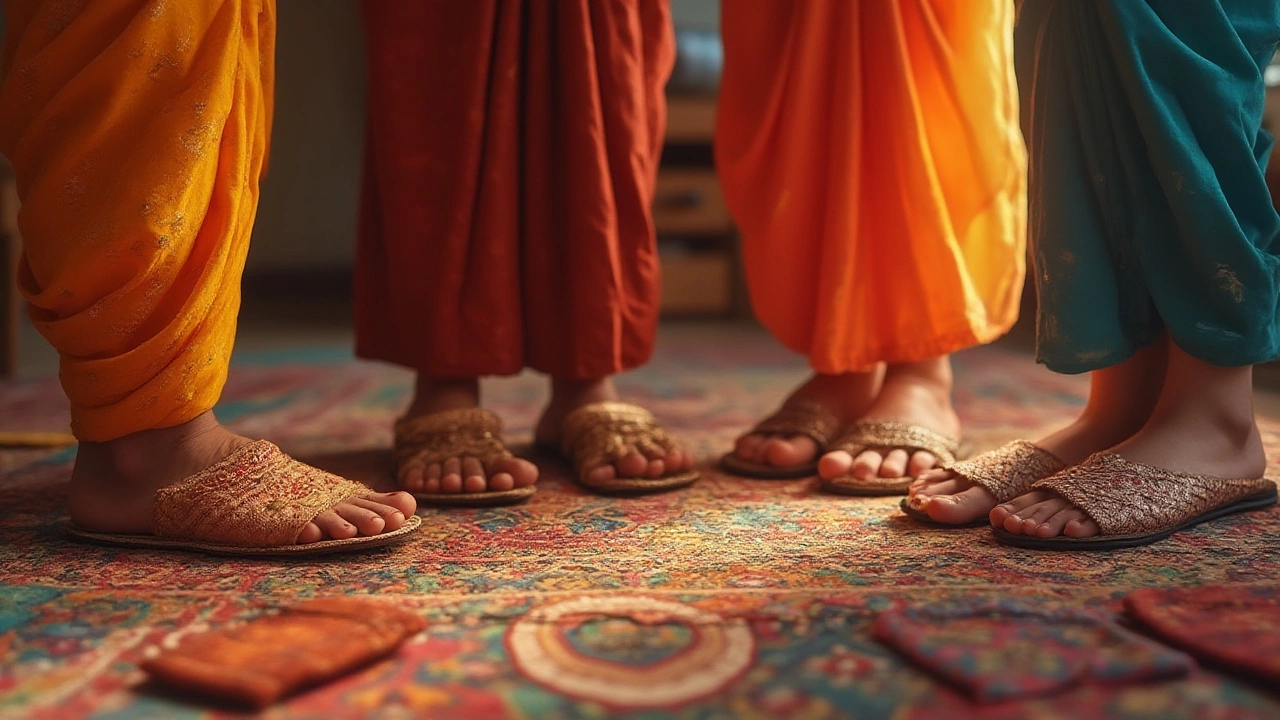Ever grabbed a pair of slippers that looked cozy in the store, only to find out they pinch, flop off, or fall apart after a month? Picking slippers sounds easy, but anyone who’s limped around the house with sore feet knows—there’s an art and a science behind finding the right pair. Let’s get real: slippers are the unsung heroes of our daily comfort. We wear them to recharge, kick back after work, or just escape hardwood floors in winter. But why do some slippers feel like clouds while others underwhelm? Turns out, tiny details make a big difference. Whether you’re after pure comfort, house-shoe style, or something to dash out to the mailbox, making the right choice saves you money, hassle, and sore feet.
What Really Matters: Comfort, Materials, and Support
Start with the basics: if your slippers aren’t comfortable, you’ll never wear them. It seems obvious, but millions of people buy cheap, hard, or floppy slippers thinking comfort doesn’t matter. Big mistake. Your feet have more nerve endings and sweat glands than almost any other part of your body. A good slipper needs to treat them right! Materials matter most. Natural fibers like wool and cotton breathe, wick moisture, and stay warm without overheating. Synthetic options—microfiber or fake-fur linings—feel plush, but some trap heat or get sweaty. If you live in a cold climate, real shearling or thick pile lining is worth the splurge, keeping toes toasty with zero itch. But those in warmer places may want something lighter and airy, like open-back terry styles.
Let’s talk support. Most house slippers are designed for relaxation, not marathons, but arch support makes a difference for tired or flat feet. Memory foam isn’t just marketing fluff; a quality foam insole molds to your foot shape, easing strain on heels and arches. Look for a removable or contoured footbed if you’ve got specific pain issues. Slippers with a sturdy, slightly raised heel cup help prevent ankle rolling, especially for older adults. For a preview of support, press down on the arch: does it bounce back, or flatten instantly? If it’s pancake-flat, keep looking.
Sole type is another make-or-break factor. Want to run outside to the garage or grab the mail? Go for a hard rubber or EVA sole with traction. Walking exclusively indoors? Softer suede or felt bottoms flex more but don’t grip on slippery or tiled floors. Double-check the sole thickness—some popular slipper brands use barely-there material that wears thin in weeks. Here’s a quick way to compare:
| Material | Pros | Cons |
|---|---|---|
| Wool/Shearling | Warm, moisture-wicking, odor-resistant | Expensive, not suitable for summer |
| Cotton/Terry | Breathable, washable, budget | Less insulation, absorbs odor faster |
| Microfiber/Faux Fur | Soft, plush, affordable | May overheat, traps odor/sweat |
| Memory Foam | Contours to foot, relieves pressure | Can break down over time |
| Rubber/EVA Soles | Durable, slip-resistant, outdoor use | Heavier, less flexible indoors |
Here’s a tip: try slippers on with the socks you’ll actually wear at home. Slight details—like a seam at the toe or snugness at the heel—become big issues after weeks of daily wear. If you’re shopping online, check video reviews or sizing charts. Some brands run small and may not match standard shoe sizes. Also, if you’re gifting: size up. Comfy slippers beat scrunched toes every time.

Features You Didn’t Know You Needed
If you think all slippers are created equal, the modern market may surprise you. Today’s “house shoes” can look like loafers, boots, sandals—even sneakers. Some are so well-built you could wear them out to grab coffee. Others feature clever design choices you might not expect. Take anti-slip soles: a necessity if you’ve got tile or hardwood. Never trust fabric bottoms if you’ve got a house of energetic pets or kids; one spill in the kitchen, and you’re doing accidental yoga. Many newer brands also add anti-microbial linings—using silver ions or bamboo fiber—to keep odor and bacteria at bay. It’s a small thing, but for anyone with sweaty feet or hot summers, it means fresher slippers for longer.
Ever struggled with slippers flying off your feet? Go for backless clogs if you need “slip on, slip off” for quick bathroom trips at night. But house shoes with closed backs or adjustable heel straps mean better security—and no stubbed toes. Some slippers, like the famous Haflinger or Glerups brands, offer removable insoles, so you can slot in your own orthotics. If custom support is important, that’s a total game changer. Slippers with machine-washable design are lifesavers for busy households. Ever tried to hand-wash a fuzzy slipper’s muddy sole? Never again.
Let’s not ignore style. Why settle for the classic “granddad” shape if you prefer something modern? Moccasin styles look sharp enough for a Zoom meeting and don’t scream “laundry day.” Slipper boots are great for winter—hug your ankles and trap warmth. Slides and open-toe slippers let your feet breathe but can drag in dust if you’ve got pets. Some high-end models even come lined with leather, making them last longer and feeling luxe. But don’t fall for style at the expense of comfort. As a rule: if a slipper feels stiff or heavy out of the box, it won’t magically break in over time.
One more thing—check out the warranty. Big brands like UGG or Sorel often back their slippers with a 6- or 12-month guarantee. Why does that matter? Cheap slippers split at the seams or collapse underfoot way too fast. Warranties don’t just show brand confidence—they save you from rebuying every winter. For eco-minded shoppers, a few companies now build slippers from recycled plastic bottles or organic wool. It may cost more, but the durability often makes up for it. If you have allergies or asthma, search for Oeko-Tex or hypoallergenic tags that guarantee fewer chemical residues.
- Anti-slip soles are essential for safety.
- Anti-microbial or odor-control linings help for sweaty feet.
- Removable insoles mean custom comfort.
- Machine-washable slippers are less hassle.
- Check for recycled or eco-friendly materials for a smaller footprint.
For specific recommendations: Sorel’s Go line and Mahabis Classic both get high marks for support and worthiness for indoor-outdoor use. L.L. Bean Wicked Good Slippers are a hit every northeast winter—their plush shearling and rugged sole last years. Prefer vegan or hypoallergenic fabrics? Check out Nootkas or Dearfoams’ “Sofsource” fuzzy lines. If you’re size 13 and can’t find anything roomy, look for brands that promote wide widths or “relaxed fit” slippers—your feet will thank you.

How to Make Your Slippers Last
Once you’ve scored the perfect slippers, don’t ruin them with lazy care. Most slippers get tossed out early because of poor cleaning or stretching. Rule one: always read the label. Some slippers claim to be machine-washable, but cheap glues or fabric can still break down under heat. Air-dry instead of tumble dry, and stuff the toes with paper to keep their shape. Avoid fabric softener or bleach—they mess up fibers and can make slippers stink faster. For leather and suede, get a small suede brush or a gentle cleaner. Spot clean stains as soon as possible; mud that dries can damage natural fibers, making slippers lose their cozy touch.
Rotate slippers just like regular shoes. If you switch between two pairs, both will last twice as long. Letting slippers rest between wears gives foam and lining time to wick away sweat and recover. This tip matters most if you wear them barefoot. For chronic odor, sprinkle baking soda inside at night and dump it out in the morning. Or, use specialized sneaker sprays. If all else fails, toss slippers in a pillowcase and wash in cold water—unless the tag says not to.
Here’s a trick: store slippers in a dry, cool spot away from sunlight. Direct sun will fade colors and dry out natural material. For people with pets, keep slippers out of reach—cat claws and dog teeth love that plush lining. If you want to take slippers on trips, pack them in a shoe bag to avoid bending or flattening the sole. Don’t walk outside if your slippers aren’t labeled for the outdoors; many pairs soak up wet grass like sponges and never quite dry out.
Slipper-lovers often get attached to the “perfect” pair and resist switching even when holes appear. That’s fine for household chores, but once the sole is so thin you feel every step, or the lining smells like a locker room, it’s time to replace. On average, a good slipper worn daily lasts 12-24 months. Track wear in high-traffic areas—heel and toe—since these break down fastest. When shopping for a new pair, revisit your last pain points: too tight, too loose, not warm enough, or wore out fast. Jot these down, and you’ll shop smarter next time.
So, don’t settle for whatever fuzzy option pops up on sale. The best slippers aren’t just a treat—they’re daily comfort you can count on and a little boost waiting for your feet every morning. Picking the right pair saves cash, keeps your feet happier, and makes mornings less painful. Don’t overcomplicate it, but don’t cut corners—your feet deserve that everyday joy.

